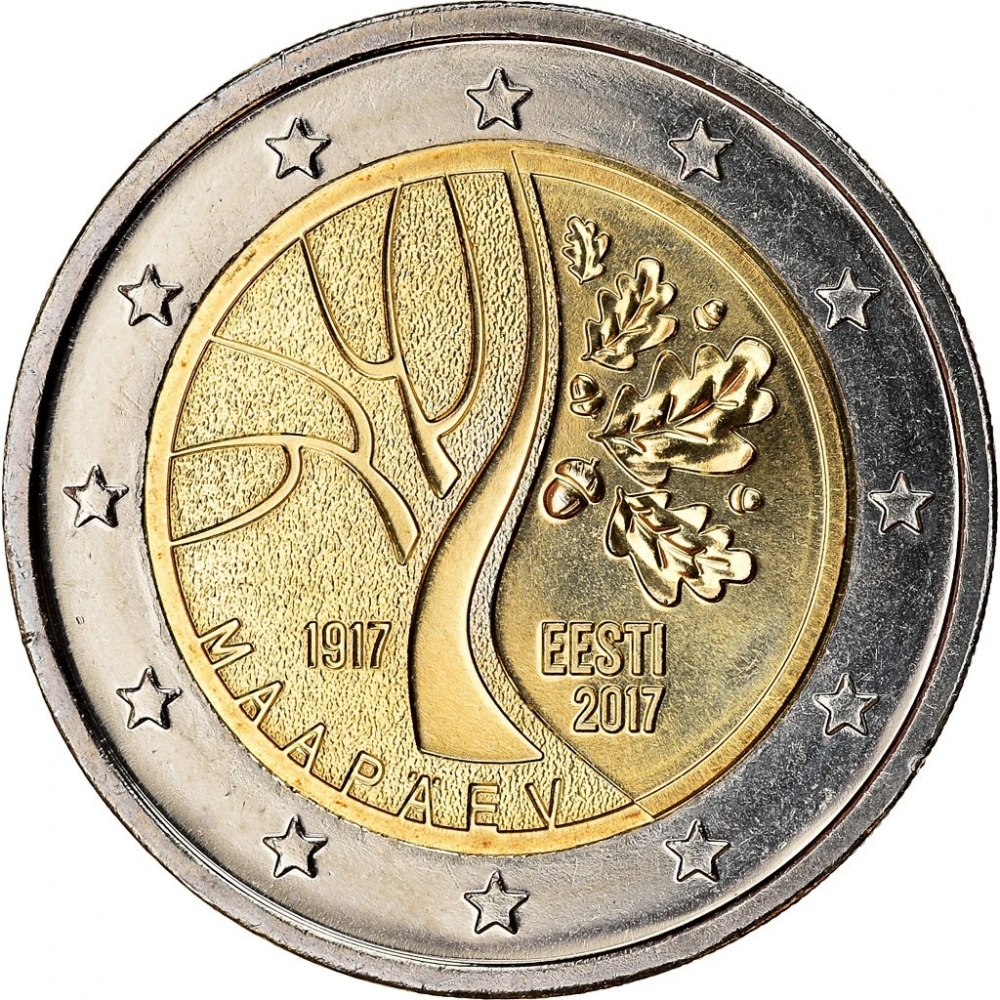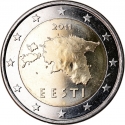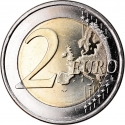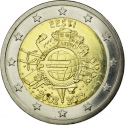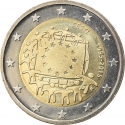You are about to finish your registration. Please check your mailbox (including spam folder). There should be a letter with a confirmation link. Check setting to make sure that your e-mail address is correct.
Send letter againDescription
The 100th anniversary of the Republic of Estonia falls in 2018. But the state was not founded in a single day. Estonia gained autonomy after the February Revolution in Russia in 1917 when the province of Estonia was established. On 1 July 1917 the first representative parliament of the Estonian people, known as Maapäev, assembled. It declared itself the highest organ of power in Estonia on 15 November 1917. It was a big step towards statehood. To mark the events that preceded the declaration of independence, Eesti Pank issued a two-euro commemorative coin.
Obverse

|
Depicts oak leaves, bare oak branches and the trunk of an oak. The winding oak symbolises Estonia’s road to independence, the bare branches relate to the year 1917, and the leaves symbolise strength, achievement and longevity. The oak leaves feature on the great coat of arms of the Republic of Estonia. 1917 EESTI |
|---|---|
Reverse

|
A geographical map of Western Europe spans the outer ring and inner core on the right side of the coin. The inscription 2 EURO is superimposed over the map of Europe, with the numeral “2” located in an open field representing the eastern Atlantic Ocean. 2 EURO |
| Edge |
ESTONIA in Estonian upright and inverted EESTI ○ EESTI ○ |
Swap now (3 offers)
Characteristics
| Type | Commemorative Issue (Circulating) |
| Material | Bi-Metallic |
| Ring | Cupronickel |
| Center | Nickel Brass |
| Weight | 8.5 g |
| Diameter | 25.75 mm |
| Thickness | 2.2 mm |
| Shape |
|
| Alignment | Medal |
| Mint |
Lithuanian Mint (LMK)
|
Related coins
10th Anniversary of Euro Coins and Banknotes
30th Anniversary of the Flag of Europe
